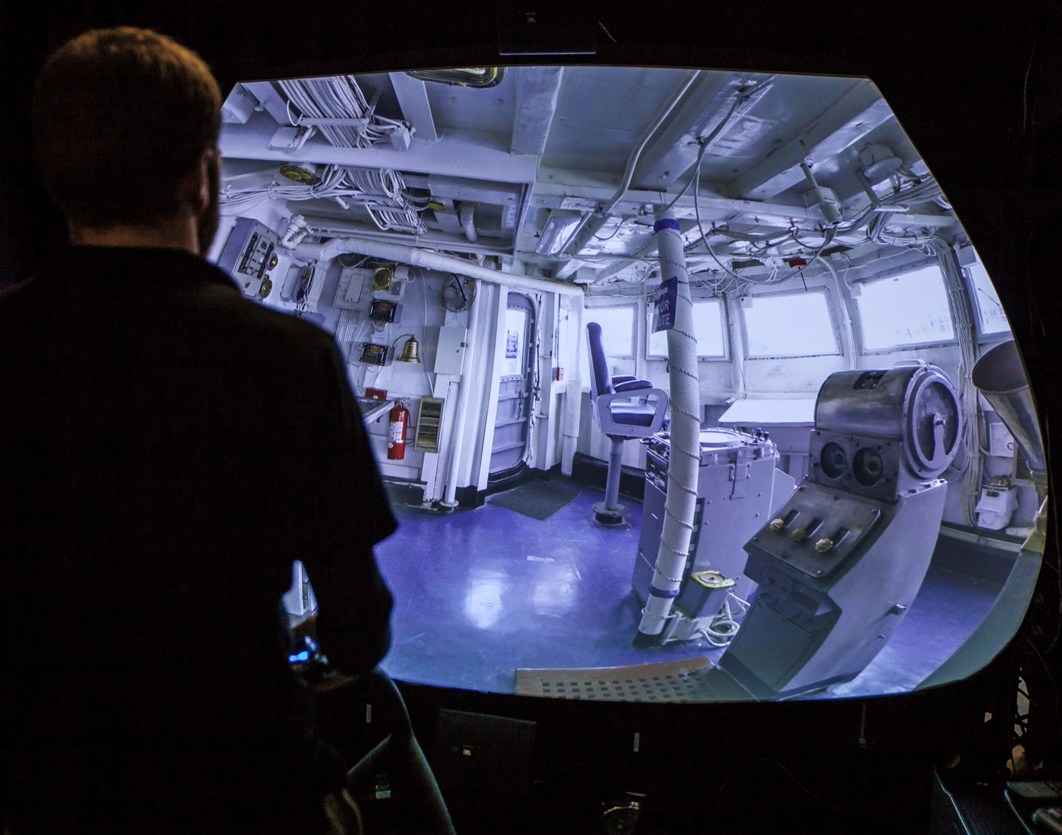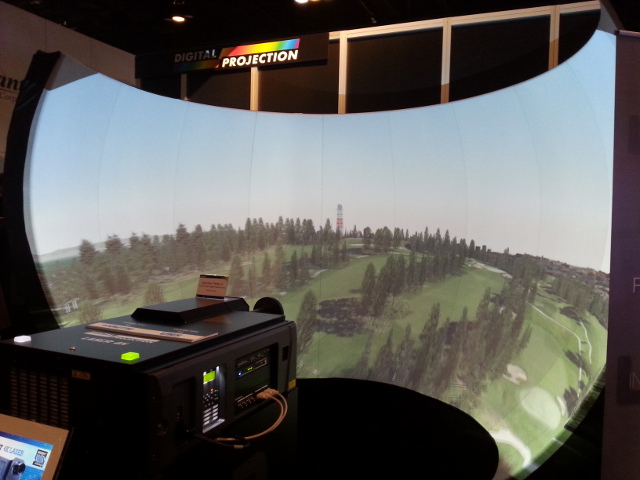Training & Simulation – I have been at the I/ITSEC trade show all week – the big North American event focused on the training and simulation market. Since I attend a broad array of industry events, it was interesting to see how the simulation market is leading in some areas and lagging in others.
The display needs for the simulation market are different than other markets. For example, the ability to project infrared images and use Night Vision Goggles is unique to this market – and that capability has been successfully developed.
Simulation displays are similar in brightness to cinema displays and contrast is highly valued in both markets. While cinema is experimenting with higher frame rate at 48 and maybe 60 fps, the simulator market is starting to embrace 120 fps operation. This clearly reduces motion blur – an effect that can take operators out of the immersive environment. Christie has been beating on this drum for four years and is now starting to make some headway with some customers adopting the approach.
The cinema, broadcast and consumer electronic industries are also evaluating the benefits of “better pixels” which includes wider color gamut and higher dynamic range. In the simulation market – at least applications for flight, ship or vehicle simulation – color is a funny animal. First, displays are not calibrated to known color standards like sRGB or rec. 709. Instead, experienced personnel will look at the display and tell the crew to adjust the color until “it looks right” – especially things like green grass. Then, the rest of the displays are matched to this color pallet.
Why is that? I heard several excuses like most of the training is in low light so color is not important, to content is not captured in a color accurate way so you can’t create accurate color (I guess no one wants to hire a colorist to fix this), to “it has just not been a priority”. I thought the whole point of high fidelity simulators was to match the real environment as best as possible so having a “golden eye” calibration approach seems rather short sighted.
High dynamic range is an interesting topic too. Simulation displays have very high contrast but they are not used in the way that Hollywood is considering using HDR. For the most part, the peak brightness levels remain low and the contrast is used to get very dark states for night time or NVG operations. A more realistic display would be able to provide much higher brightness to produce much punchier highlights (think lighting elements, for example).
Two technologies got their debut at I/ITSEC this year that just might enable this capability – if the simulation guys can wrap their minds around this. This is the availability of laser-phosphor projectors and direct view LED displays.
The laser phosphor projectors, shown by JVC, Sony, Christie and Digital Projection, offer a range in brightness from 1100 (JVC) to 2000 lumens (Sony) to 5500 lumens (Christie) to 12,000 lumens (Digital Projection). But there is a reason that high brightness projectors have not been used in simulation – cross illumination from one side of the curved screen to the other, which can greatly diminish contrast. But using the high end of these projectors to deliver punchy highlights may be a reasonable approach that will have to be evaluated.
In addition, Christie showed an elliptically-shaped screen which the company demoed last year as the “egg” display. This does a much better job of reducing this cross contamination. In one demo, Christie had four of the bright laser-phosphor projectors illuminating a modest sized elliptical screen and it was getting a very impressive 30:1 contrast (most simulators are less than 12:1 due to this effect).

Christie’s Laser Phosphor projectors illuminate an Elliptical screen showing a ship navigation application
Alternatively, laser phosphor projectors coupled with 4K resolution and a dome lens that corrects for aberrations can allow a single projector to fill a dome, as was demonstrated by Digital Projection. And, with laser phosphor, orientation restrictions are removed so the projector can be mounted above the dome instead of in front of the dome in the photo below.

Digital Projection Shows how a single 4K Laser Phosphor projector can fill a dome display
VDC claims it is now the first to showcase LED direct view displays for the simulation market with pixel pitches of 2.6mm to 0.8mm (maybe going to 0.6mm later). LEDs offer lots of contrast, high dimmability, high brightness, very fast response and more, making them a very interesting technology for this market. There are many flat applications for training and VDC says it can make curved and maybe spherical displays as well. On the down side, they are expensive, give off a lot of heat and use a lot of power. Initially, VDC suspects that putting neutral density filters over the panels will lower the brightness for simulation needs, but if they are to find long term use, they will have to be customized for this market.
In the broadcast market, there is a trend to virtualize. This means taking the functionality of dedicated hardware and porting the software part of that to a generic PC platform residing in the cloud. The same thing is starting to happen in simulation with dedicated workstations possibly giving way to thin clients for some of the less taxing simulation applications.
The simulation market and the gaming industry have a lot in common too. The ability to create virtual worlds, add physics models and create powerful engines to render huge geo-accurate databases is an area where simulation probably leads other industries.
But the simulation market is going beyond this to create what is termed live, virtual, constructive. Think of this as a multi-user game on steroids. Here, the idea is to create small to global scale training simulations where all the assets are networked together. Live assets can include aircraft, vehicles or ships. Virtual assets can mean computer generated planes, helicopters, ships or vehicles, while constructed assets can include crowds of people or vehicles on a highway that have their own actions and dynamics, but are not human guided on an individual basis. And there can be blurring between these definitions too. For example, a real airplane can be flying a training mission using actual instruments, but it displays radar, targeting and mapping information that is being fed to the airplane for the training. The pilot might follow a flight path and drop imaginary bombs that are modeled live in the simulation.
As Nic Gibbs of Rockwell Collins explained, the industry is just starting to understand what these tools can do, but more work is needed to understand how best to use these tools to improve the effectiveness of the training and measure those results.
There was a lot more to see and discuss – and we will have complete coverage in a special supplementary issue of Large Display Monitor next week. – Chris Chinnock

